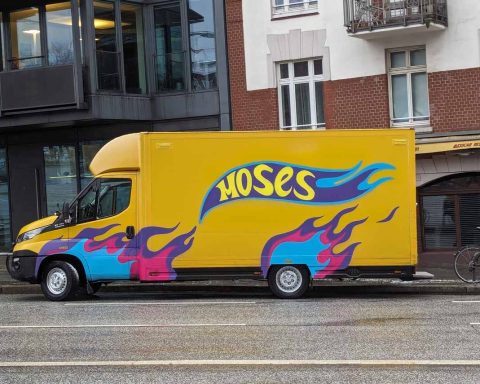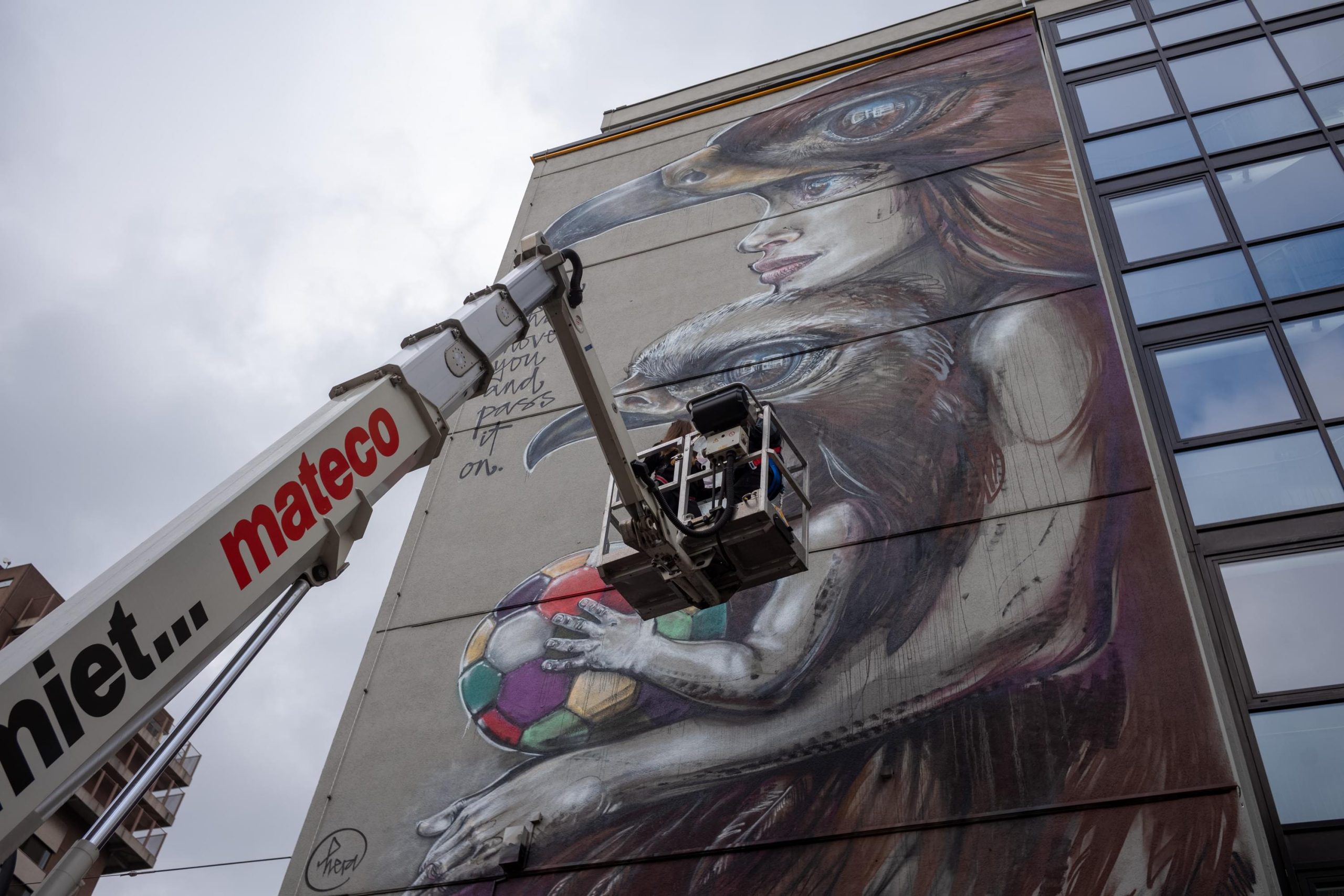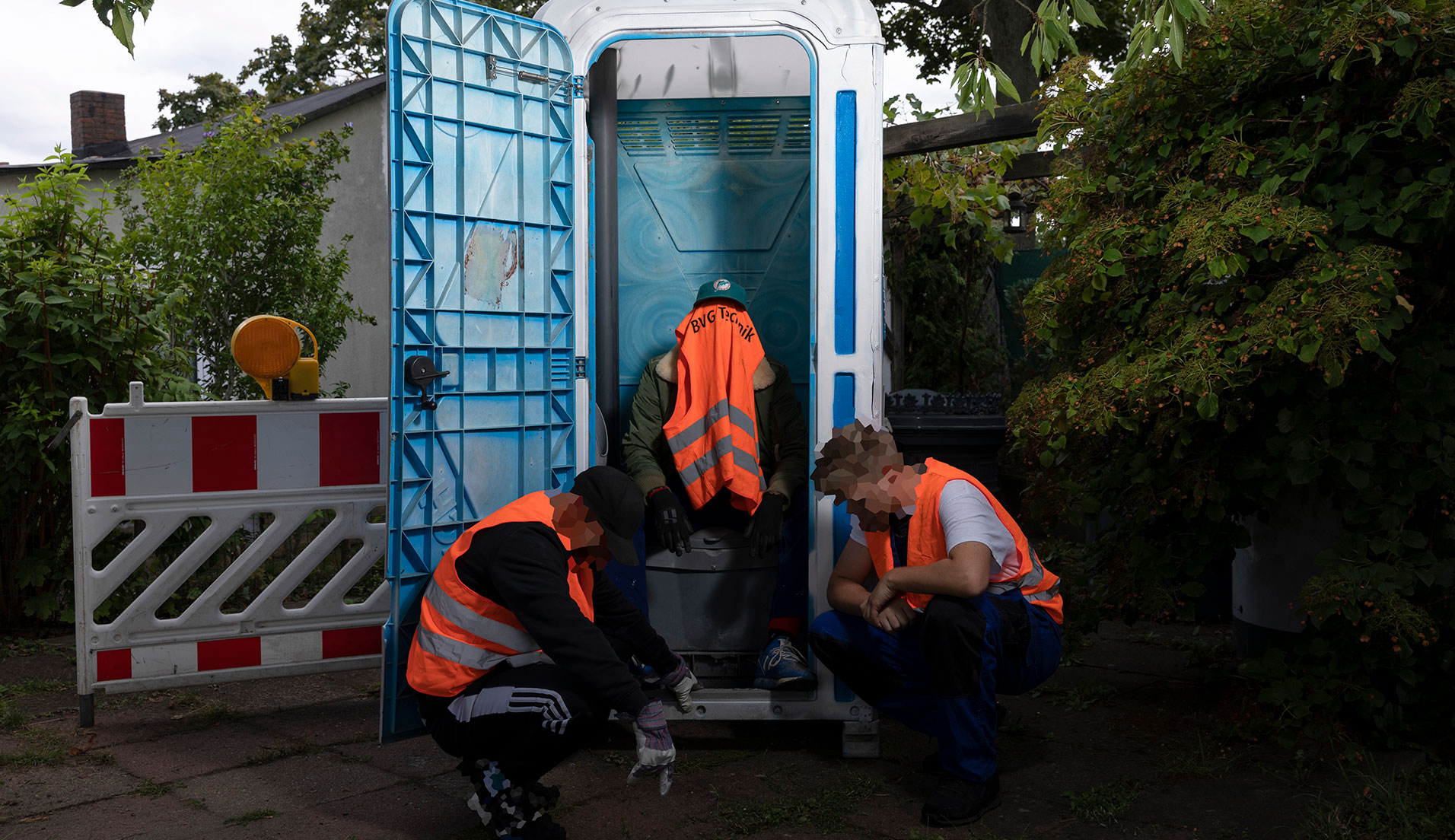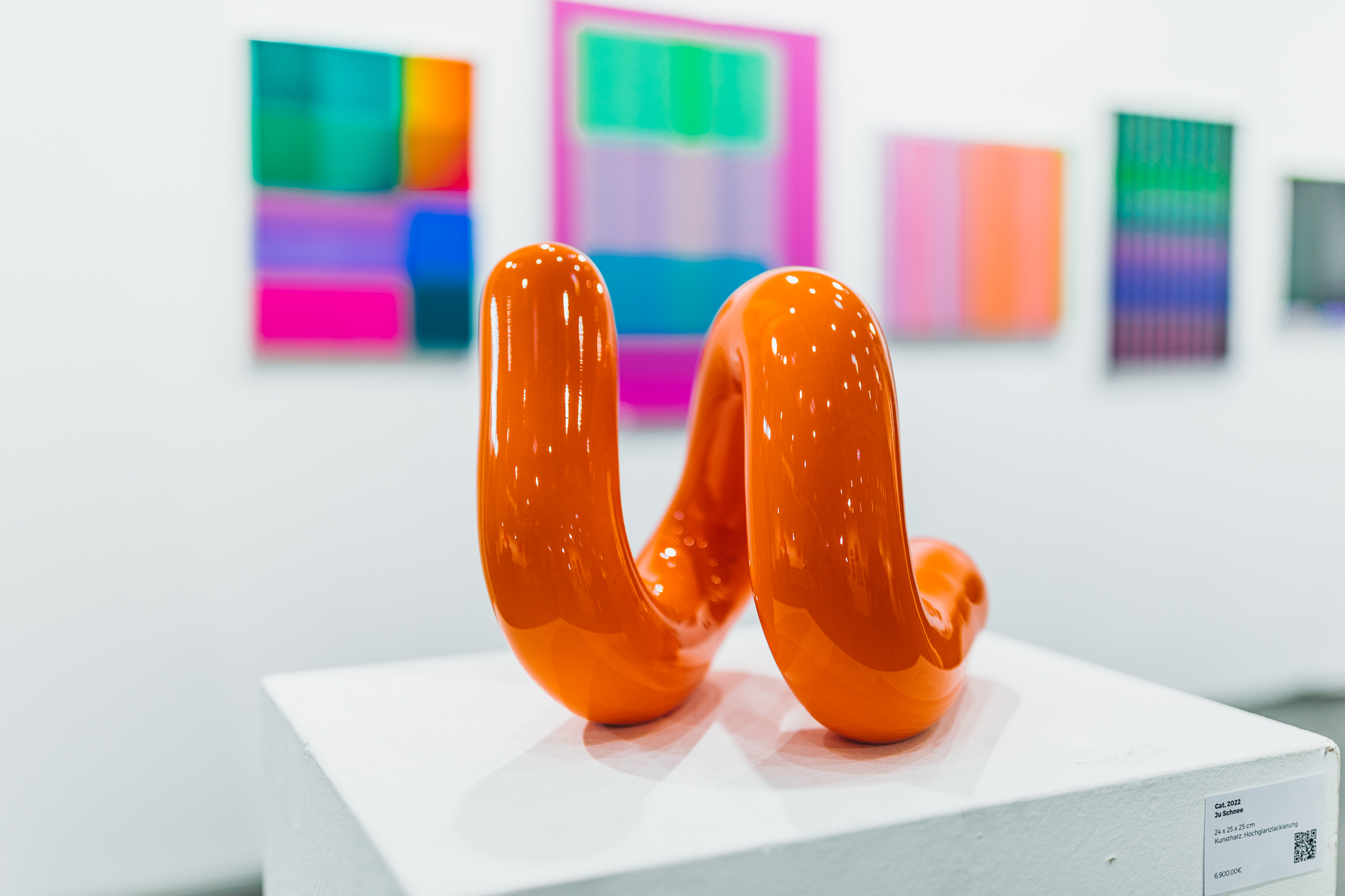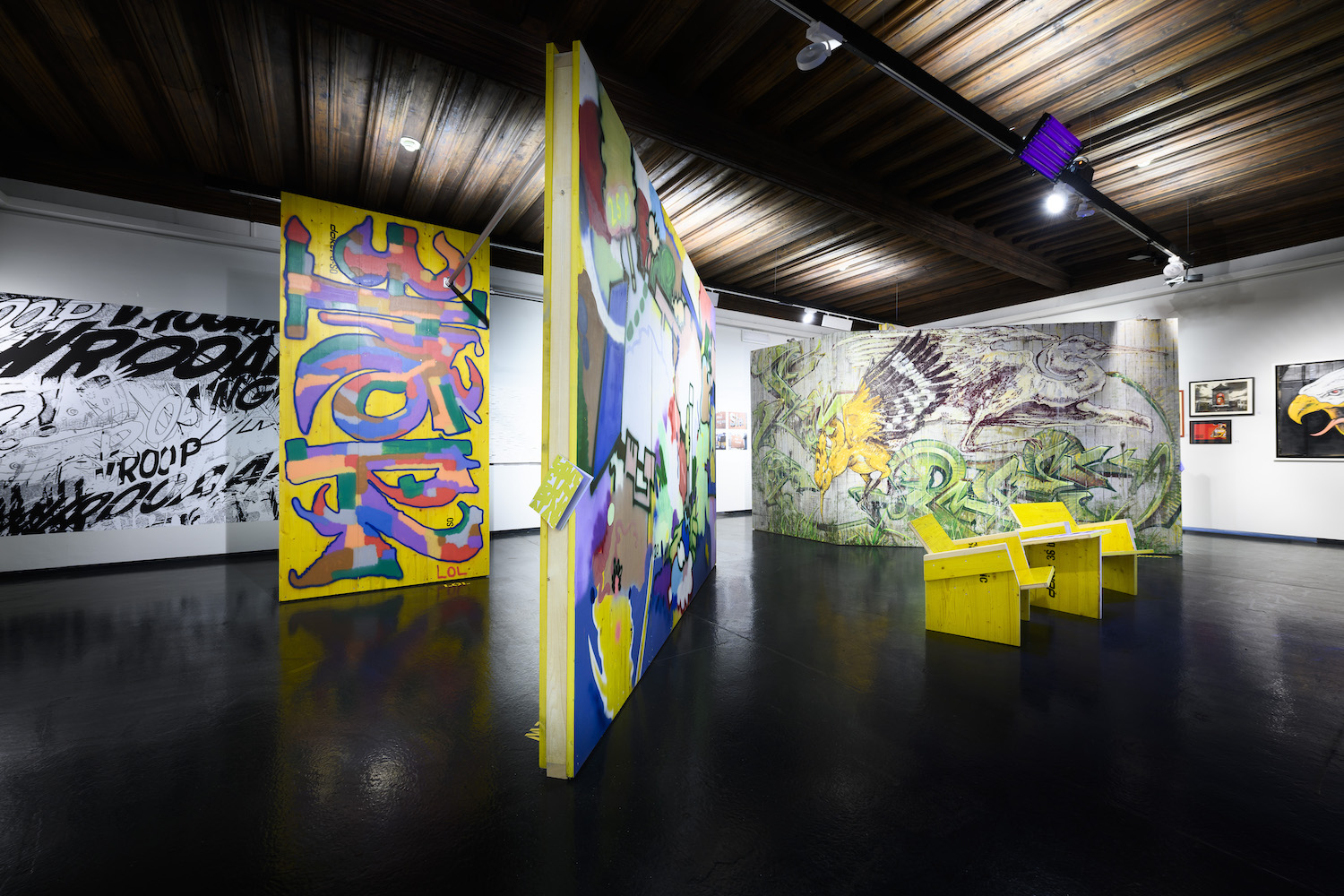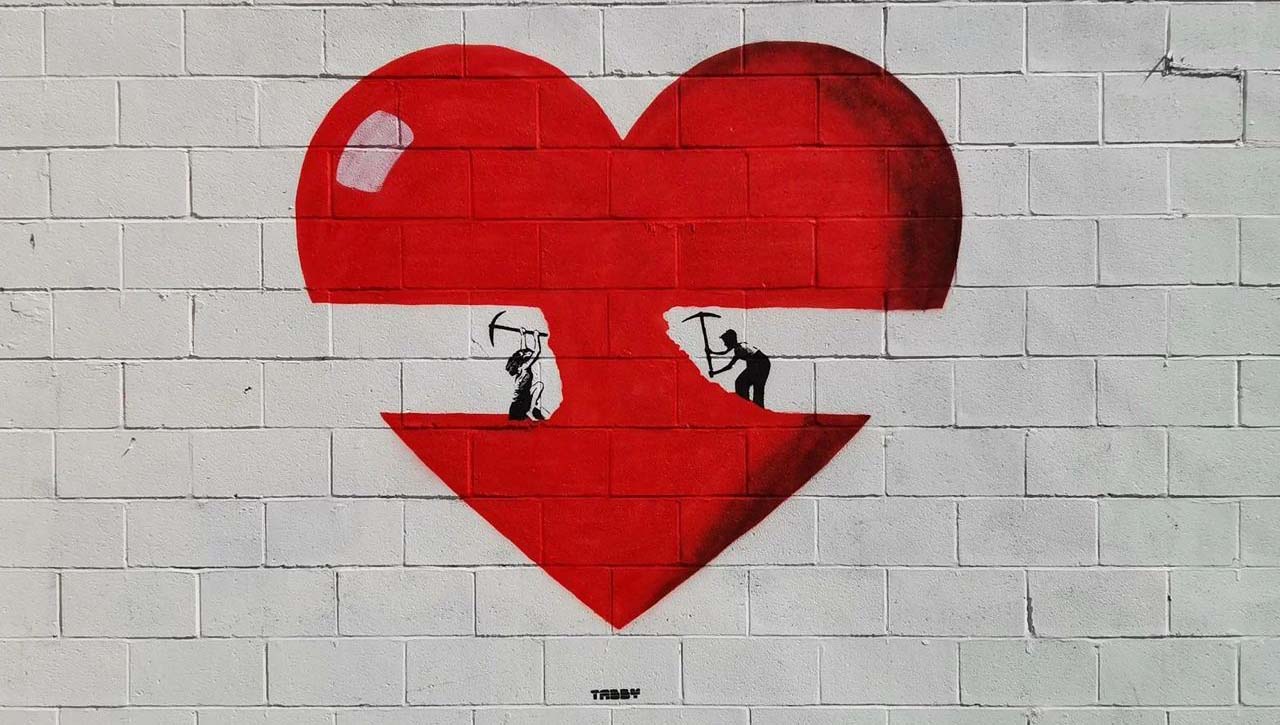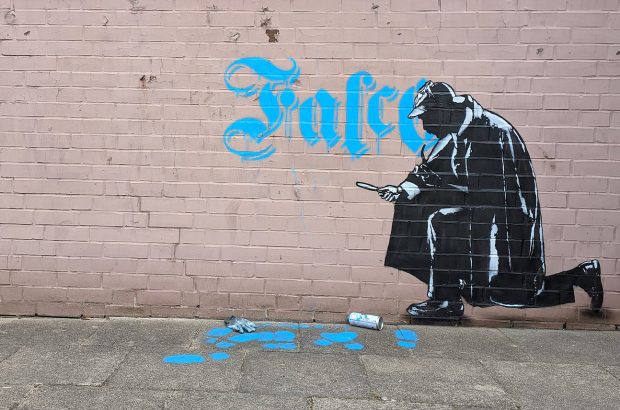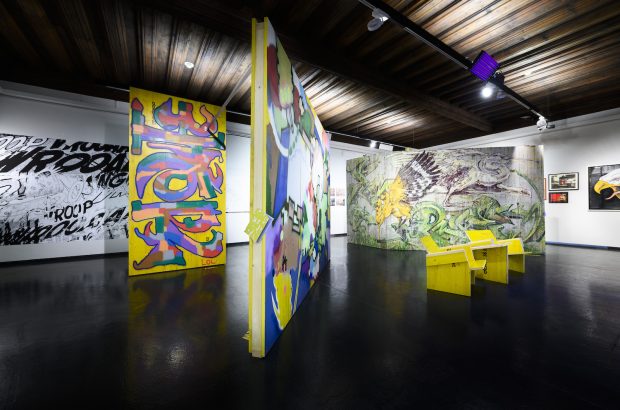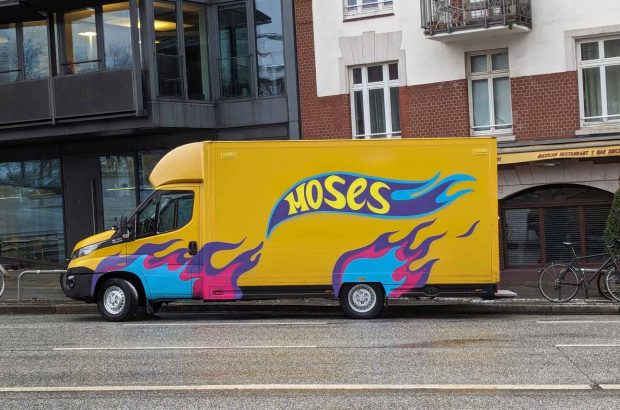Noch bis zum So., den 29. November läuft die Ausstellung ‚Backjumps #4 – urbane Kommunikation und Ästhetik‘ im Projektraum / Kunstraum Kreuzberg. Wer die Gelegenheit hat sollte die Chance nutzen und die Ausstellung am Wochenende besuchen. Auch wenn ich persönlich der Backjumps #4 nur einen kurzen Besuch abstatten konnte, kann ich die Ausstellung nur empfehlen.
Die Künstler Pigenius Cave, Brad Downey, RZM (Ritsche Koch/Zasd/Christian Marien) sowie das Duo Wermke & Leinkauf präsentieren mit ihren Arbeiten eine intelligente und konsequente Fortschreibung und Erweiterung des Kunstgenre ‚klassischer‘ StreetArt und beweisen in ihrem Umgang mit dem urbanen Raum, wozu StreetArt in der Lage ist.
Einen ausführlichen (Rück)blick auf die Backjumps #4 Ausstellung gibt es auf der Seite von artslant.com zu lesen.
„With its dominant street charm and DIY flair, it seems fitting that Berlin is the birthplace for a project like Backjumps – a magazine for “Urban Communication and Aesthetic” cum art event. The magazine was introduced in 1994 and is now available in museum book-stores (Palais de Tokyo, Tate Modern etc.) without having lost any of its street cred. To promote and celebrate the magazine’s growing popularity, Editor Adrian Nabi inaugurated Backjump’s Live Issuein 2005 – a biennial series of street art exhibitions held in Berlin’s legendary squat, the Künstlerhaus Bethanien in Kreuzberg. Always a lively affair, the opening nights of Backjumps’ Live Issue soon became known as must-go event for many Berliners.
However, with a myriad of works by various artists, the Live Issue wasn’t always a comprehensively curated show. This year, Vol. 4 was presented in a much smaller and more concentrated format. It’s not clear if this is a result of curatorial decisions or a lack of funding in light of the financial crisis – either way: the reduced amount of art and artists being shown strongly contributed to the show’s overall unity. Vol. 4 features four aesthetic positions by seven artists living in Berlin (some working as a duo or a group), with a focus on their interactions with the city.
The first room featured a video by American ex-pat and Backjumps veteran Brad Downey. Shot in broad daylight on a busy road that connects the trendy neighborhoods of Prenzlauerberg and Friedrichshain, the video shows the creation of one of the artist’s “Spontaneous Sculptures” – a clever combination of disobedient behavior and action performance. The video features Downey attaching the ends of industrial rolls of adhesive tape in blue, red and white to a rotating, column-shaped billboard bearing an ad for a popular Swedish clothing manufacturer. The rolls of tape are then fixed upon street objects such as lamps and garbage cans. As the billboard rotates, it gradually becomes covered with tape, becoming the source of its own transformation. Downey can be seen running around the column trying to find more fixed objects to connect with tape. In the process, the cylindrical billboard begins to resemble a maypole with the energetic Downey a modern pagan celebrating urbanism instead of nature.

Another piece that transforms the idea of reclaiming urban space for art is the video “Zwischenzeit” (In Between) by the creative duo Wermke and Leinkauf of Stop Making Sense. In 2008, the two artists took a makeshift handcar made of metal and bike parts and embarked on a nocturnal journey on Berlin’s railway tracks. The result is a 17 minute video arrangement on 3 screens, featuring an eerie soundtrack made up of the monotonous, droning sound of the handcar rolling along the tracks at night. Trains can be seen cruising past the stations intermittently. Following their departure (after the station has quieted down and before the next train arrives) an obscure figure can be made out in the dark, slowly making his way along the tracks. Once in focus, we can see a calm but persistent person riding the handcar.
Similarly, artist Pigenius Cave built a tricycle to explore Berlin’s largely inaccessible underground for “The Immortal Youth of Pigenius Cave,” a collection of photographs and found objects taken out of city’s canalization system. Displayed in an amusing manner resembling a natural history museum, the objects and photographs allegedly reconstruct the childhood and youth of a street artist growing up in Berlin. RZM’s installation „Wandklopfen“ also uses found objects and sounds recorded around Berlin to create a three dimensional collage of the city.
The story goes like this: To celebrate their 75th anniversary and spice up its image, Lacoste (with the help of the KaDeWe) commissioned 12 street artists to reinterpret the brand’s green crocodile emblem. The works were to be presented in the departments store’s windows for a few weeks before being auctioned. Downey, a reputedly “hard to buy” artist, finally agreed to participate, submitting the cryptic proposal/prophesy “Something outside will turn green.” Instead of designing a piece for the department store’s windows, Downey sprayed them with Lacoste-green. The piece presented at Backjumps documents everything from the news reports speculating about the identity of the “vandals”, to the damage-control email exchange between the artist’s agents and KaDeWe managers.
Downey’s action could be understood as a much needed critique of the state of street art: alienated from its illegal, nocturnal origins, graffiti today not only features prominently on ridiculously priced sneakers and T-shirts, but is also widely commissioned by major companies for “embedded” advertisements. However, I made the unfortunate mistake of reading what the artist himself had to say about his piece. In his text, Downey describes how he was contacted by NOWADAYS, the event agency that curated the Lacoste show and tried to convince him to participate. Admitting that he didn’t know what the KaDeWe was, Downey decided to “go and have a look.” The American ex-pat, unfamiliar with Berlin’s oldest, most traditional department store, expected to find a shopping mall. While looking for the Lacoste “store”, Downey recounts an unpleasant encounter he had with a KaDeWe employee whose English wasn’t good enough to understand what he wanted.
Claiming to be “disgusted” by his first experience with the KaDeWe, Downey resolved to take part in the show. It seems strange that instead of being disgusted with a “creative” commercial industry that pays people for generating bad art (in celebration of a clothing brand, for example), the artist directs his anger towards a simple KaDeWe employee who does what Berliners do best – be rude. But giving Downey the benefit of the doubt, the work itself is hilarious documentation of commissioned art gone wrong.
Hili Perlson“
——— Source: http://www.artslant.com/global/articles/show/11355
Bild: Wermke and Leinkauf, 2009
